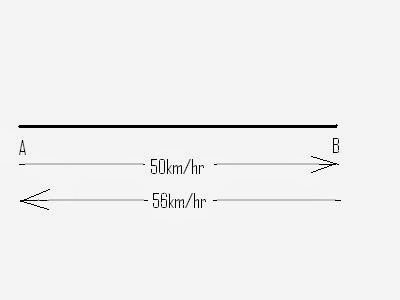Average: Basic Understanding and Properties Today I'm going to start a new topic of quantitative aptitude i.e. Average. It is a very simple topic and
boitshupoO
Answered question
2020-10-27
Average: Fundamental Concepts and Qualities I'm going to start a new quantitative aptitude topic today called Average. It is a pretty straightforward subject that only requires basic mathematical computations. The average concept has several uses. In the following session, I will go over its uses. I'll start by trying to explain the fundamentals of this subject to you.
Answer & Explanation
Ian Adams
Skilled2021-04-21Added 163 answers
The term "average" simply refers to the mean value of all provided observations, or, alternatively, the arithmetic mean of observations.
Average = (Sum of all observations)/ (Number of observations)
Example1: Calculate the average of the subsequent observations:
3, 4, 8, 12, 2, 5, 1
Solution: Average = (Sum of all observations)/ (Number of observations)
Average = (3+ 4+ 8+ 12 +2+ 5+ 1)/7 = 35/7 = 5
So, Average = 5
i) Between the maximum and least observation is the average.
ii) The average will also be multiplied by the same value if the value of each observation is multiplied by some value N. i.e.N.
For example: Assume the prior collection of findings. If all observations are multiplied by 2 then the new observations will be as follows.:
6, 8, 16, 24, 4, 10, 2
New Average Old Average
iii) The average will change by the same amount whether the value of each observation is increased or decreased by some amount.
For example: Continuing with the same example. If 2 is added to all observations, then new observations will be as follows:
5, 6, 10, 14, 4, 7, 3
New Average = (49)/7 = 7 = (5 + 2) = 2 + Old Average
iv) Similarly, if each observation is divided by some number, then average will also be divided by same number.
For example: If 2 is divided from all observations, then new observations will be as follows:
1.5, 2, 4, 6, 1, 2.5, 0.5
New Average = (17.5)/7 = 2.5 = 5/2 = Old Average/ 2
I can therefore state that any general procedure done to observations
Example2: Find an average of first 20 natural numbers.
Solution: Average =(Sum of first 20 natural numbers)/ (20)
Now, we know that Sum of first n natural numbers = ((n)(n+1))/2
Therefore, Sum of first 20 natural numbers
Average
Example3: The second number in a set of three numbers is twice the first and three times the third. Find the greatest number if the average of these numbers is 44.
Solution: Let x be the third number
According to question, second number = 3x = 2(first number)
Therefore, first number = (3x)/2 second number = 3x and third number = x
Now, average = 44 = (x + 3x + (3x)/2)/3
So, largest number i.e. (3x) = 72
Example4: Average of four consecutive even numbers is 27. Find the numbers.
Solution: Let x, x+2, x+4 and x+6 be the four consecutive even numbers.
According to question, ((x) + (x+2) + (x+4) + (x+6))/4 = 27
(4x + 120)/4 = 27 x = 24 Therefore, numbers are 24, 26, 28, 30
Special Case
finding the average speed
Suppose a man covers a certain distance at x km/hr and covers an equal distance at y km/hr. The average speed during the whole distance covered will be (2xy)/ (x+y)
Example5: A bike covers certain distance from A to B at 50 km/hr speed and returns back to A at 56 km/hr. Find the average speed of the bike during the whole journey.
Solution: Average speed km/hr
Eliza Beth13
Skilled2023-05-11Added 130 answers
madeleinejames20
Skilled2023-05-11Added 165 answers
New Questions in Algebra II
Which operation could we perform in order to find the number of milliseconds in a year??
Tell about the meaning of Sxx and Sxy in simple linear regression,, especially the meaning of those formulas
Is the number 7356 divisible by 12? Also find the remainder.
A) No
B) 0
C) Yes
D) 6What is a positive integer?
Determine the value of k if the remainder is 3 given
Is a prime number?
What is the square root of ?
Is the sum of two prime numbers is always even?
149600000000 is equal to
A)
B)
C)
D)Find the value of to the base ?
What is the square root of 3 divided by 2 .
write as an equivalent expression using a fractional exponent.
simplify
What is the square root of